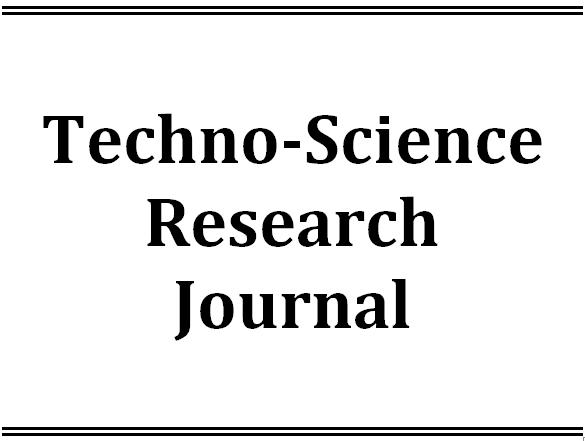Latest Issue
Empowering Education with Online Khmer Handwritten Text Recognition for Teaching and Learning Assistance
Published: August 30,2025Undergraduate Student Dropout Prediction with Class Balancing Techniques
Published: August 30,2025Status of Seawater Quality at Koh Rong Island, Sihanoukville, Cambodia
Published: August 30,2025Low-Complexity Detection of Primary Synchronization Signal for 5G New Radio Terrestrial Cellular System
Published: August 30,2025Word Spotting on Khmer Printed Documents
Published: August 30,2025Tuning Hyperparameters Learning Rate and Gamma in Gym Environment Inverted Pendulum
Published: August 30,2025Examining Passenger Loyalty in Phnom Penh Public Bus System: A Structural Equation Modelling Approach
Published: August 30,2025Prediction on Load model for future load profile of Electric Vehicle charging demand in Phnom Penh
Published: August 30,2025Economic Study on Integrating PV-DG with Grid-Tie: Case Study in Cambodia
Published: August 30,2025Isolation and Characterization of Lactic Acid Bacteria in Four Different Kinds of Fermented Vegetables Sold in the Markets
-
1. Department of Chemical Engineering and Food Technology, Institute of Technology of Cambodia, Russian Ferderation Blvd., P.O. Box 86, Phnom Penh, Cambodia
Academic Editor:
Received: June 01,2014 / Revised: / Accepted: June 08,2014 / Available online: June 27,2014
In Cambodia, the fermentation of different kinds of vegetables such as cucumber, Cambodian melon, green mustard and cabbage uses spontaneous fermentation process by which sugars are converted into lactic acid by lactic acid bacteria (LAB) naturally present on the skin of vegetables.Eventhough LAB were used, the type of LAB might be different for each vegetable. The types of LAB in these fermented vegetables have not yet been investigated so far. Therefore, the objective of this study was to isolate LAB in four different kinds of fermented vegetables sold in Cambodian markets and then to identify the isolated LAB by sequencing. Prior to sequencing, polymerase chain reaction and restriction fragment length polymorphism were first conducted to amplify the target DNA and grouping the bacteria into different groups, respectively. Among 16 groups of LAB, 15 were identified to be Lactobacillus and another one was Pediococcus. They were Gram-postive and catatase-negative. In addition, different kinds of LABwere found in each fermented vegetable.

